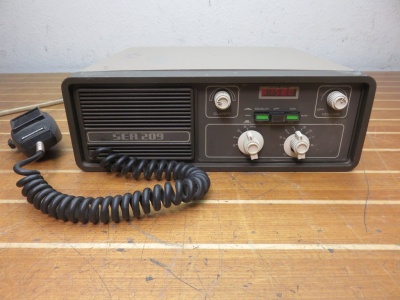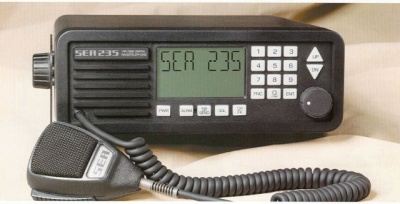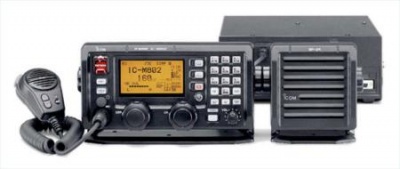HF marine
From HFUnderground
HF-SSB marine bands - these are standardized maritime mobile MF and HF communications bands - note that many maritime mobile users operate outside of these bands and there are dozens of country- or region-specific additional bands/frequencies. These bands are used for USB voice transmissions, various data modes including FAX used for Maritime Fax Transmissions, FSK, modes for various purposes as well as USB voice and RTTY weather and emergency broadcasts to ships at sea.
Fisheries, fishing boats, and other commercial marine users will often use frequencies in the HF aeronautical or aircraft bands (including the 6525 kHz to 6685 kHz and 6685 kHz to 6765 kHz military aircraft 6 MHz subbands 6525 kHz to 6765 kHz), other HF aircraft bands, fixed/mobile band (including 43 meters - 6765-7000 kHz) clear frequencies in the shortwave broadcast bands or even amateur frequencies for "out of band" communications to reduce the chance of radio interception by their competition. Out of band frequencies are also used in other ITU regions for marine fax transmissions.
See also: VHF marine band
MF-SSB and HF-SSB marine traffic (usually in the bands above 4 MHz) can be in simplex or semi-duplex for voice and/or data. Cross-band operation is also allowed per ITU regulations. Often you will hear ship-to-ship communications in simplex mode on the "ship transmit" frequency of a duplex pair.
MF SSB and HF SSB marine bands
| Band | Frequency Range |
|---|---|
| 405-525 kHz | MF band, used in some areas for NAVTEX on 490 kHz and/or 518 kHz. 500 kHz or 500 kc (600 meters) was the original CW Morse code calling frequency |
| 1600-2000 kHz | MF band, used in Europe and elsewhere (also used heavily for fishnet beacons) - overlaps with 1800-2000 kHz 160 meter amateur band |
| 2000-2300 kHz | MF 2 MHz marine band - USB voice calling/distress 2182 kHz, DSC calling/distress 2187.5 kHz - USCG no longer monitors 2182 kHz USB |
| 2450-2850 kHz | MF 2 MHz marine band, USB voice and FSK modes, some AM voice heard here in Russia, Eastern Europe and Asia (older-generation trawler radios) |
| 4000-4063 kHz | 4 MHz fixed/mobile band, shared with marine for simplex purposes, can be paired cross-band with 8 MHz |
| 4063-4438 kHz | HF 4 MHz marine band - USB voice calling/distress 4125 kHz, DSC calling/distress 4207.5 kHz |
| 6200-6525 kHz | HF 6 MHz marine band - USB voice calling/distress 6215 kHz, DSC calling/distress 6312 kHz |
| 8000-8195 kHz | 8 MHz fixed/mobile band, shared with marine for simplex purposes, can be paired cross-band with 4 MHz |
| 8195-8815 kHz | HF 8 MHz marine band - USB voice calling/distress 8291 kHz, DSC calling/distress 8414.5 kHz |
| 12330-13200 kHz | HF 12 MHz marine band - USB voice calling/distress 12290 kHz, DSC calling/distress 12577 kHz |
| 16460-17360 kHz | HF 16 MHz/17 MHz marine band - USB voice calling/distress 16420 kHz, DSC calling/distress 16804.5 kHz |
| 22000-22855 kHz | HF 22 MHz marine band |
| 25070-25121 kHz | HF 25 MHz marine band |
| 26145-26175 kHz | HF 26 MHz marine band |
| 26175-28000 kHz | Various CB-like marine allocations found in this region (many SSB marine radios stop at 27500 kHz or 27.5 MHz) |

See also:
- VHF marine band
- Maritime Fax Transmissions
- Maritime Weather Transmissions
- Pescadores or Peskies (Peskys) - marine users operating out of band
- 27 MHz Marine CB - 27MHz or 27 Meg Australia marine band
- 29 MHz CB - South African marine mobile 29MHz frequencies
- Japanese 1 watt DSB (AM) double side band fishery radio service Japan 26-27 MHz
- Japanese 25 watt SSB single side band fishery radio service Japan 27 MHz
- South Korean - Republic of Korea 27MHz fishery radio service AM 27 MHz
- HF fixed/mobile allocations, often heavily used by marine stations, i.e. pescadores
- Fishnet beacons, radiobuoy, 1.6-4 MHz and 26-30 MHz, slowly being replaced by SATCOM/GPS based systems
- [1] HF marine distress and calling frequencies
- [2] US Coast Guard MF and HF SSB marine radiotelephone frequency channel list (duplex and simplex)
- [3] US Coast Guard MF & HF 2-26 MHz marine SSB channel information
- [4] Marine Safety Broadcasts MF, HF, VHF and SATCOM broadcasts and services
This site is a participant in the Amazon Services LLC Associates Program, an affiliate advertising program designed to provide a means for sites to earn advertising fees by advertising and linking to Amazon.com. Some links may be affiliate links. We may get paid if you buy something or take an action after clicking one of these.

